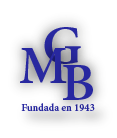



Editoriales
Virtualization emergency
Gaceta Médica Boliviana
Universidad Mayor de San Simón, Bolivia
ISSN: 1012-2966
ISSN-e: 2227-3662
Periodicity: Semestral
vol. 43, no. 1, 2020

For many years, medical schools have been working to improve teaching and overcome ineffective teaching methods, to discard memoristic strategies devoid of creativity towards learning, to move from the theoretical to the factual, the importance of fostering responsibility for self-directed learning, with the teacher being the guide and/or role model who directs according to a planning that responds to the needs of the community.
Many medical schools have used competency-based education to identify different learning goals and objectives, thus transforming assessment. Many schools have decreased the time devoted to the basic science curriculum while integrating clinical medicine within this time frame and reintroducing basic science content in subsequent medical residencies.
Until months ago, students met in physical university or hospital settings for collaborative learning, problem solving or discussing clinical cases in small groups; immersion in clinical contexts, both in contact with patients and in simulated scenarios, from the very beginning of their training, was undoubtedly the norm. The last months of many medical schools have been no different from that of the Faculty of Medicine “Dr. Aurelio Melean”, the COVID-19 also had the potential to affect studies throughout the entire educational process of their careers.
Social distancing has emerged as the most effective preventive strategy1to avoid SARS-CoV-2 infection, which wiped out traditional forms of learning, effective or ineffective for education, and without the possibility of face-to-face alternatives. Thus, classroom interaction had to be replaced by virtual “ curriculum “, which still needs to be reformulated to adapt to the new teaching context.In this way, small groups of students are meant to meet online for discussion and problem-solving sessions, clinical skills role play situations are held on a deferred basis, and exams are moved to the online setting
A medical professional is trained in the management of risk and/or emergency situations during his or her training to become a specialist and we know how to give the corresponding priority to an acute situation of various pathologies. The COVID-19 health emergency has challenged most universities to “virtualize” the teaching of “emergencies"2;. In contrast to medical training, there was no prior full and complete preparation to deal with the peculiarities of such a situation: a form of urgency teaching.
Faced with the current health scenario, the Faculty of Medicine “Dr. Aurelio Melean” and other divisions of the Universidad Mayor de San Simón, beginning with the Department of Educational Planning, took on the compelling task of virtual teaching-learning for teachers, and the team of the Department of Medical Education and Planning is responsible for effectively consolidating this knowledge.
This picture would be incomplete if we fail to mention the reluctance of some professors to the incorporation of technology in the educational processes, but there were also some professors who advanced in this direction but with the persistence of only the transmission of information in those who only changed the physical location of the site. On this path of transformation lies the great challenge of making evident the need and value of digitalizing academic processes, aiming at transferring academic training to their activities and generating good teaching practices.
The virtualization process should consist of online educational strategies in which the lecturer will accompany the student in their formation, and should include webinars, recordings, online clinical sessions, workshops and many other resources provided by the web that can be creatively adapted to university education. Even the professor will be able to respond to queries on technological and pedagogical issues for the requested products3. And as progress is made, teacher self-evaluation and reflection will allow new approaches that will deepen the tasks of virtualization of academic processes.
It is probable that many university faculty, in a scarce or great way, have anticipated in the articulation of technologies to the formative processes, in many cases because the Department of Medical Education and Planning in a sustained way and through the years has developed several courses with the fundamental purpose of supplementing the teaching skills to integrate technology in the formative processes of the Faculty of Medicine “Dr. Aurelio Melean”, although no one had imagined the absolute virtualization, especially due to the administrative characteristics of the educational plans within the current state university policy.
We are addressing the educational emergency, any mistakes will serve for immediate amendment and/or short term improvement. We are on the right track.
Bibliographic references
1. Reimers, F., & Schleicher, A. (2020). Un marco para guiar una respuesta educativa a la pandemia del 2020 del COVID-19. CIAE, Universidad de Chile, OCDE; 2020. (Cited July 05, 2020). Available at: https://oei.int/oficinas/secretaria-general/publicaciones/un-nuevo-marco-para-guiar-una-respuesta-educativa-a-la-pandemia-del-2020-del-covid-19
2. Failache, E., Katzkowicz, N., & Machado, A. (2020). La Educación en Tiempos de Pandemia y el Día Después: El Caso de Uruguay. Revista Internacional de Educación para la Justicia Social ; 2020. (Cited July 05, 2020). Available at: https://revistas.uam.es/riejs/article/view/12185
3. Finkelstein, C. (2020). La enseñanza en la universidad en tiempos de pandemia. (Cited July 05, 2020). Available at: http://citep.rec.uba.ar/wp-content/uploads/2020/06/AcaDocs_D11_La-ense%C3%B1anza-en-la-universidad-en-tiempos-de-pandemia-2.pdf.
Author notes

